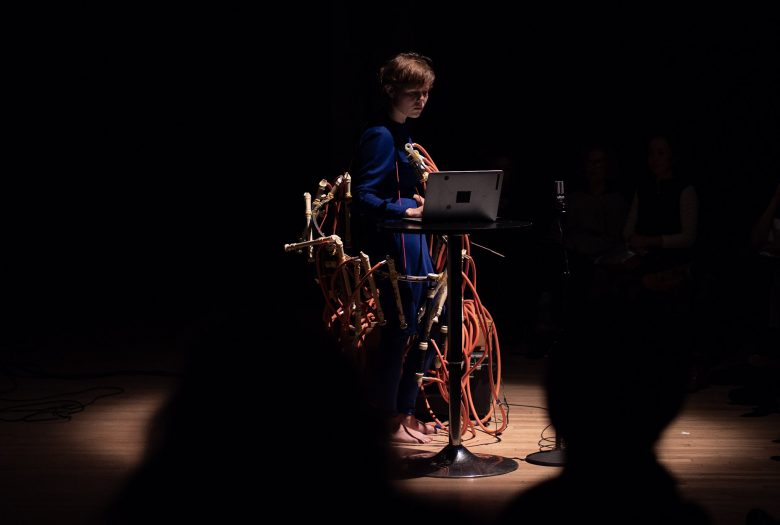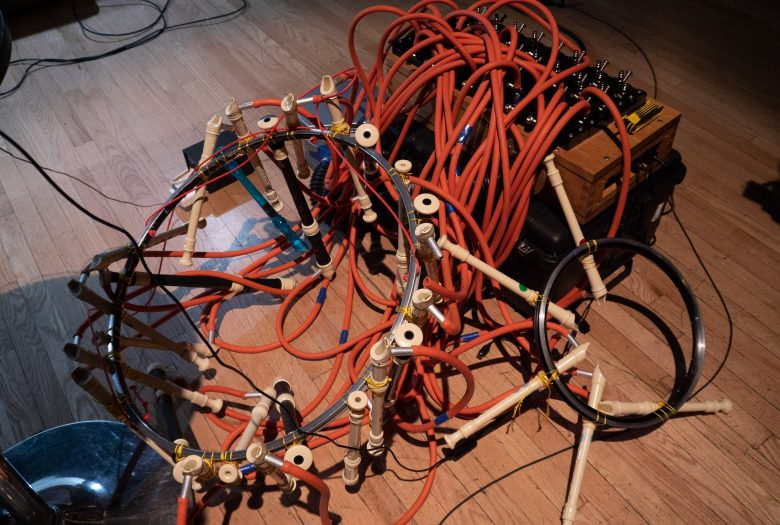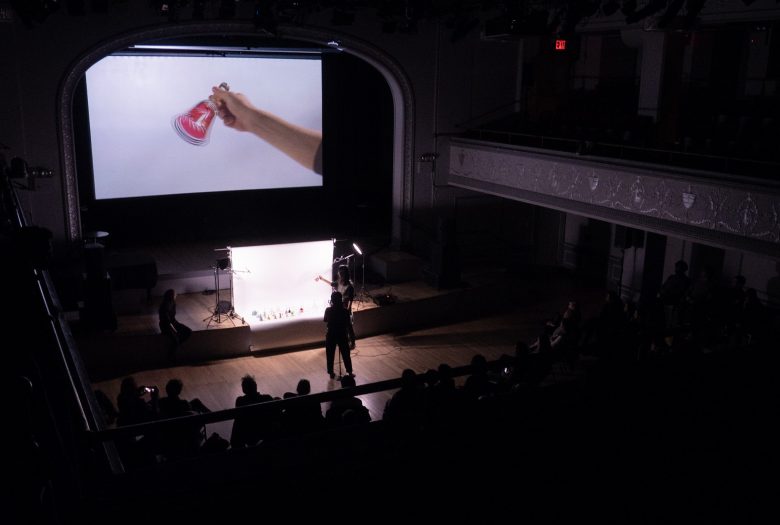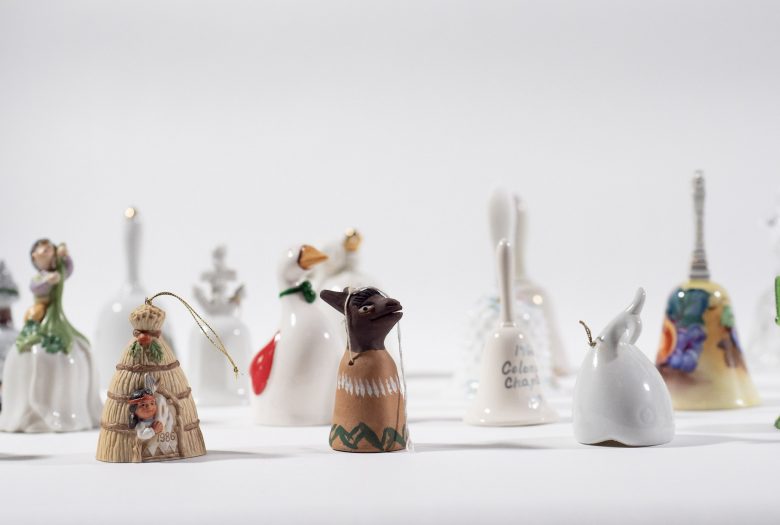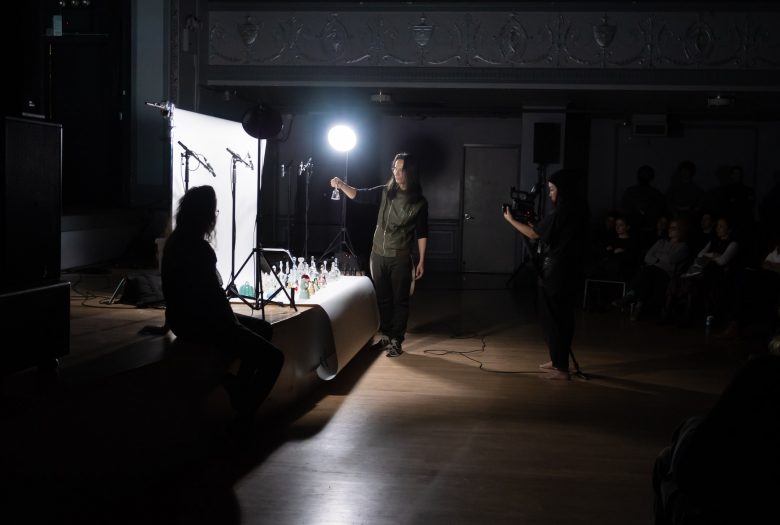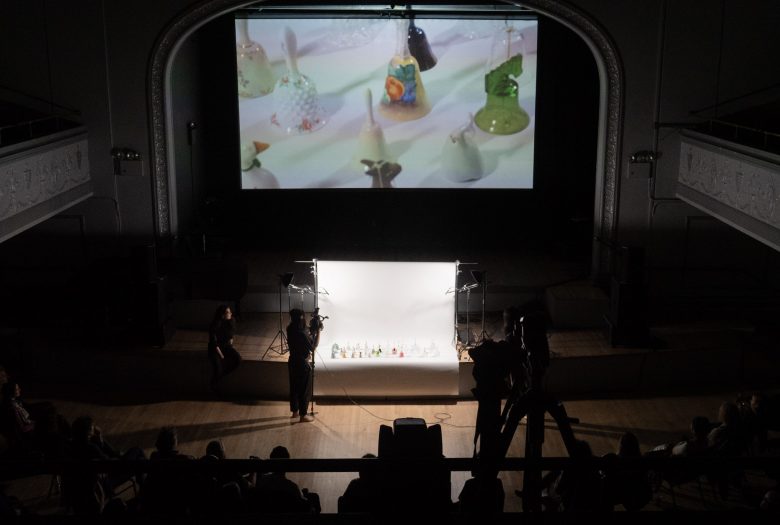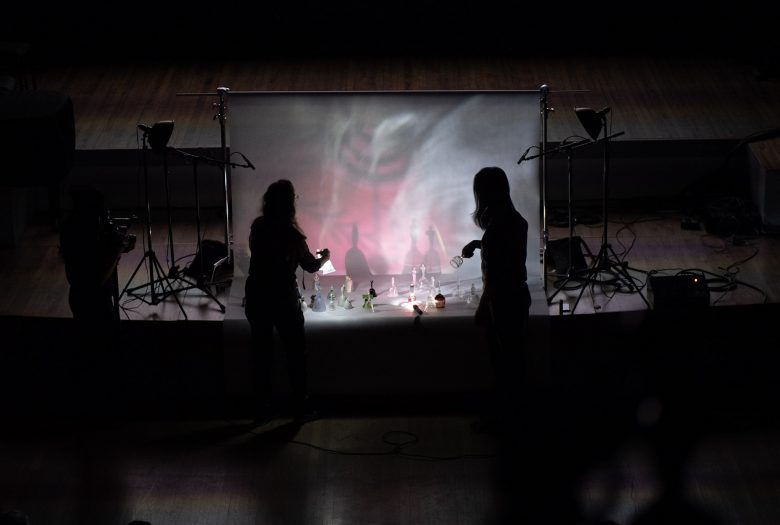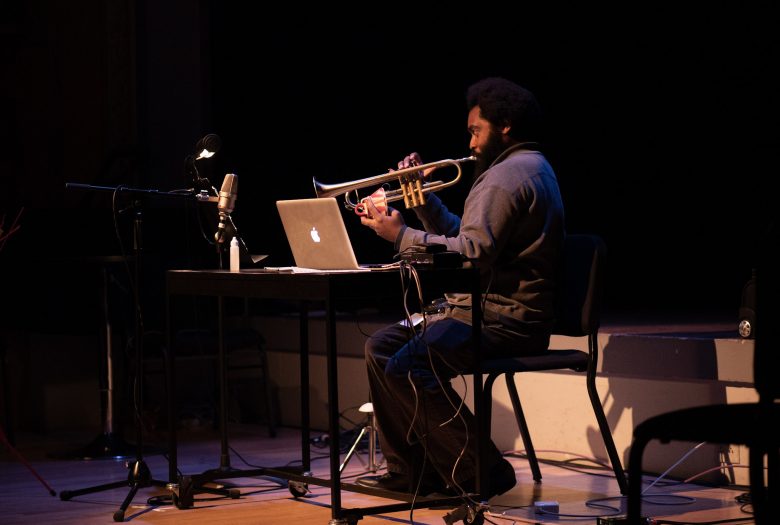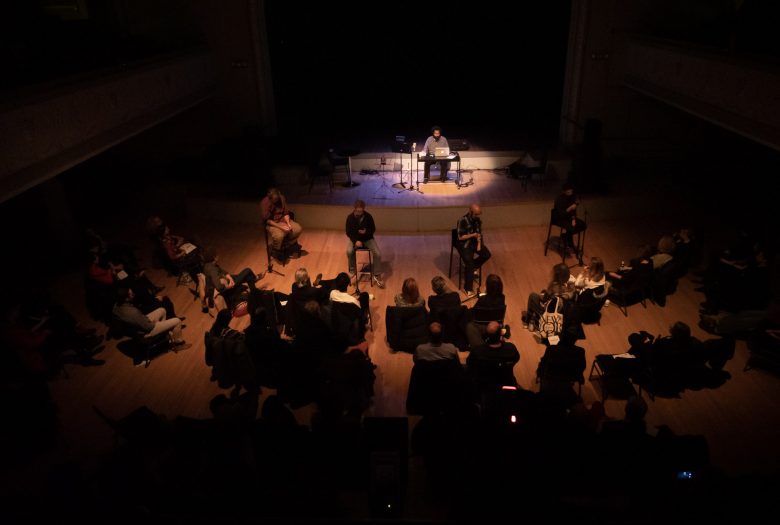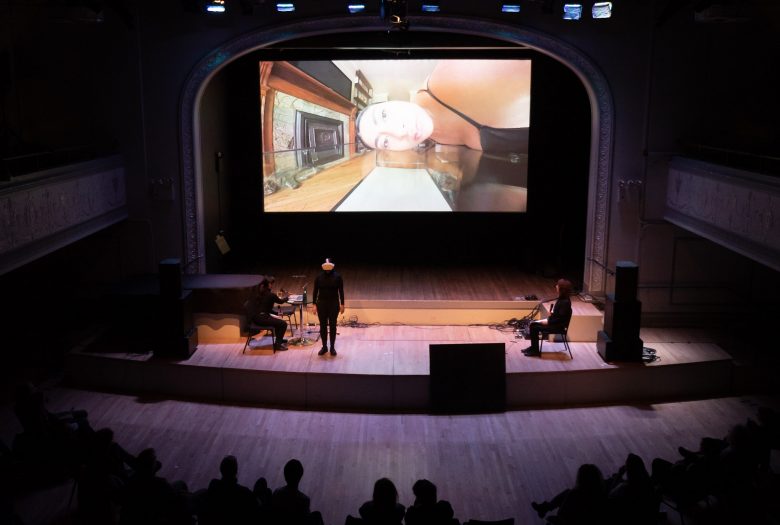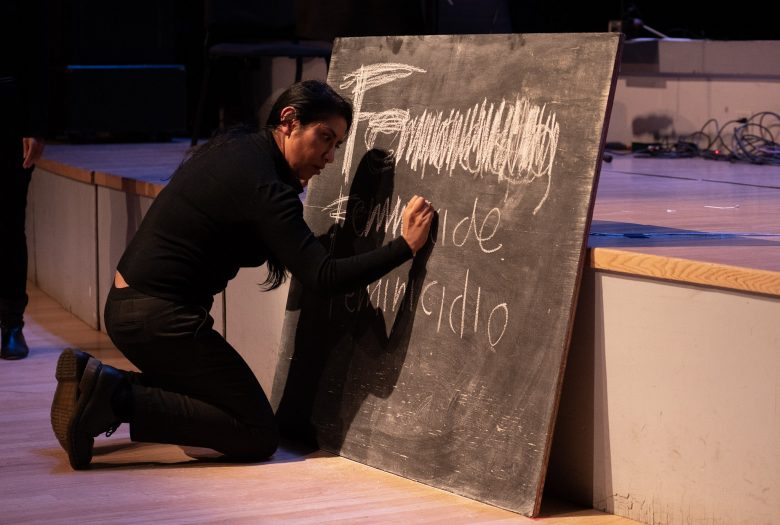Folly Systems is a two-night festival featuring a diverse group of artists working in the intersection of performance and media art. Using media and technologies not as an end in themselves but as non-neutral creative strategies, Folly System artists utilize tools that range from virtual reality, custom projectors, wooden artisanal instruments, communication media, and DIY video interfaces. What is the difference between a spoon and virtual reality? Is one more technological than the other? Despite differences in materials and technical complexity, the same creative gesture is made across various media over and over again as if we were endlessly rediscovering the wheel. Performances by Ragnhild May, Aki Onda, Lee Gilboa, Forbes Graham, Amanda Gutierrez, Ying Liu, Ian Kornfeld, Jean Carla Rodea, Art Jones, Nao Nishihara, and Gill Arno. Curated by Cecilia Lopez. Co-presented with Outpost Artist Resources.
11.13 Performances
Ragnhild May, School Harmony
In Music for Children, the innovative theory about children’s musical education developed by German pedagogues Carl Orff and Gunild Keetman in the 1920s, the recorder served as a learning tool before advancing to “real” instruments. School Harmony consists of recorders in different sizes that play a composition controlled by an algorithmic sequencer, inspired by simple school melodies. Creating poly-rhythmic patterns via MaxMSP, School Harmony incorporates difference tones, a third tone that occurs as a result of two simultaneous high-frequency tones that can occur spontaneously in a recorder classroom situation.
Aki Onda, Bells
Bells is an aural and visual composition made from a collection of glass and ceramic hand bells selected from thrift shops and flea markets in New York. While experimenting with various techniques that change the resonance of the bells as they are rung, they are also used as filters of light to create patterns with the shadows they cast. An approach that invokes quasi-ethnographic methods of preserving objects and exploring how their former owners may have used them, the objective is to recall lost sounds and sense histories that would otherwise be erased. The twenty-minute piece is accompanied by live video projections from Brooklyn-based artist Moko Fukuyama.
Aki Onda: bells, lights
Lucie Vítková: bells
Moko Fukuyama: video projections
Lee Gilboa, Woman
Woman is a narrative-based composition that creates a sonic portrait of a desired woman without referring to any visual markers or immediate indicators of her identity. This iteration of the piece explores how a desired figure can completely consume spaces (both mental and physical) through the use of real time spatialization and vocal processing.
Forbes Graham, Encounters I
Encounters I is a composition for trumpet, electronics, and voice. Audience members are invited to participate in the performance by receiving instructions via text messages. Performers and audience will engage in dialogue with source texts and each other. The piece explores how text and sound are partitioned and transformed via computer-based technologies.
Amanda Gutierrez, Flâneuse>La caminanta
Flâneuse>La caminanta is a VR performative documentary of soundwalks taken by female-identified participants in the public space. The sound and video montage explores the point of view of the three women through cinematic walkside conversations. The dialogue emphasizes their spatial memories and their experience of mobility in public and private spaces, while speculative maps render a metaphor of their migratory path.
With Viv Corringham and Julia Santoli
Cecilia Lopez is a composer, musician and multimedia artist from Buenos Aires, Argentina currently based in New York. Lopez studied composition with Carmen Baliero and Gustavo Ribicic. She holds an MFA from the Milton Avery Graduate School of the Arts, Bard College and an MA from Wesleyan University in composition (2016). Her work has been performed and exhibited at Museo de Arte Moderno de Buenos Aires (AR), Center for Contemporary Arts (Vilnius, Lithuania), Festival Internacional Tsonami de Buenos Aires (Argentina), Roulette, Issue Project Room, Floating Points Festival, Ostrava Days Festival 2011 (Ostrava, Czech Republic), MATA Festival 2012 (NY), Experimental Intermedia (NY), Fridman Gallery (NY), Kunstnernes Hus (Oslo, Norway) and Ende Tymes Festival (NY), Festival Punto de Encuentro organized by the Asociación de Música Electroacústica de España (Spain), and the XIV Cuenca Biennial, among others. She was a Civitella Ranieri fellow in 2015 and has participated in various residency programs such as Atlantic Center for the Arts, Ostrava Days Institute, Harvestworks, and Rupert Residency.
Outpost Artists Resources supports new creative work through residencies and events. Their mission is to serve artists in need of technical assistance with video, audio, and physical computing-based art projects and to foster a dialogue between visual art and experimental music. Outpost hosts gallery exhibitions, artists talks, screenings and events that pair visual art, video, experimental music, and performance in an effort to bring adventurous audiences challenging interdisciplinary projects. Outpost has served the media arts community since 1991, providing access to high quality video editing technology, sound engineering, and custom programming.
Folly Systems is made possible by the support of National Endowment for the Arts, NYC Cultural Affairs, NYSCA and media The Foundation Inc. It is a co-presentation between Roulette and Outpost Artist Resources

